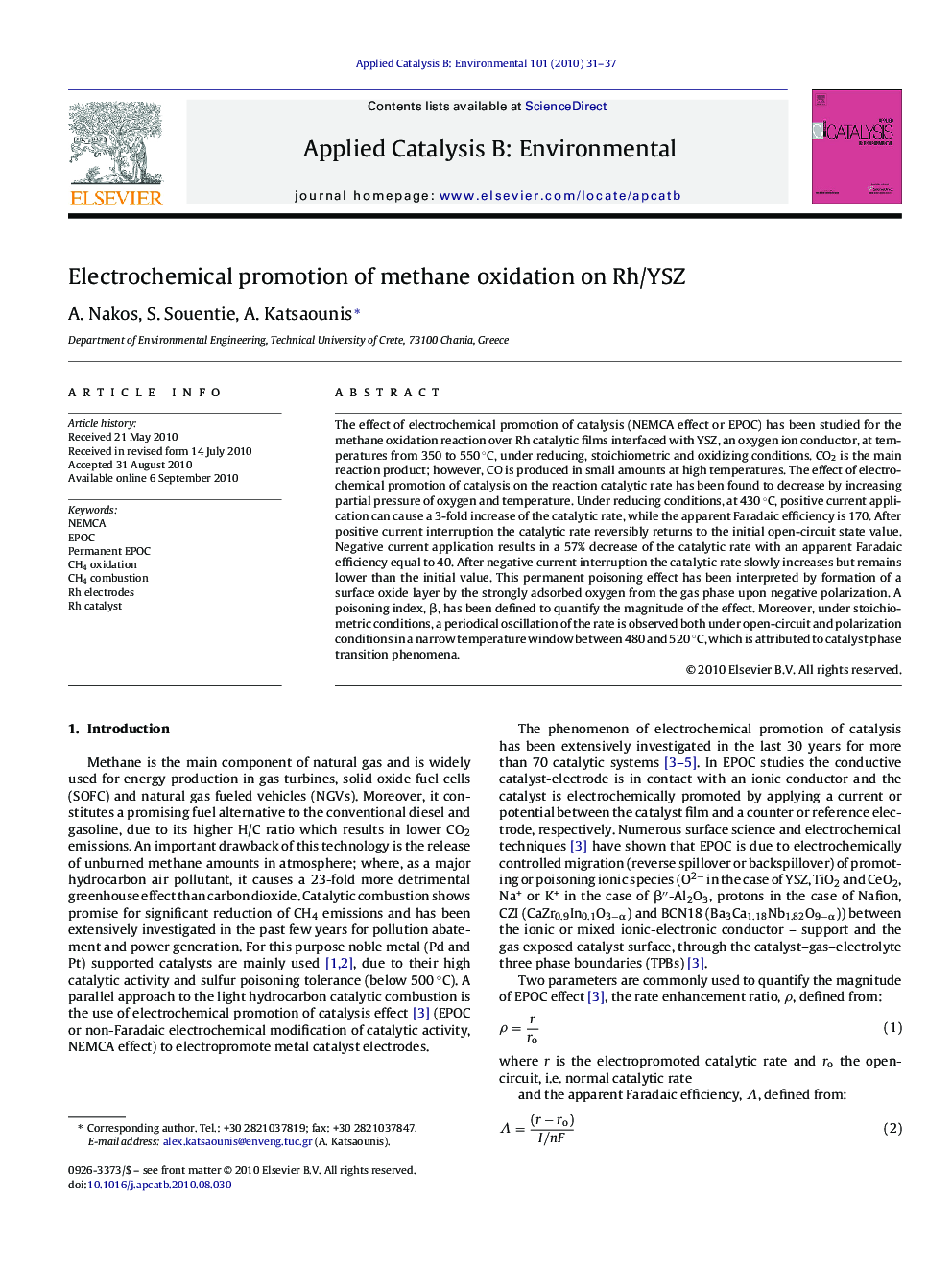| کد مقاله | کد نشریه | سال انتشار | مقاله انگلیسی | نسخه تمام متن |
|---|---|---|---|---|
| 47077 | 46458 | 2010 | 7 صفحه PDF | دانلود رایگان |

The effect of electrochemical promotion of catalysis (NEMCA effect or EPOC) has been studied for the methane oxidation reaction over Rh catalytic films interfaced with YSZ, an oxygen ion conductor, at temperatures from 350 to 550 °C, under reducing, stoichiometric and oxidizing conditions. CO2 is the main reaction product; however, CO is produced in small amounts at high temperatures. The effect of electrochemical promotion of catalysis on the reaction catalytic rate has been found to decrease by increasing partial pressure of oxygen and temperature. Under reducing conditions, at 430 °C, positive current application can cause a 3-fold increase of the catalytic rate, while the apparent Faradaic efficiency is 170. After positive current interruption the catalytic rate reversibly returns to the initial open-circuit state value. Negative current application results in a 57% decrease of the catalytic rate with an apparent Faradaic efficiency equal to 40. After negative current interruption the catalytic rate slowly increases but remains lower than the initial value. This permanent poisoning effect has been interpreted by formation of a surface oxide layer by the strongly adsorbed oxygen from the gas phase upon negative polarization. A poisoning index, β, has been defined to quantify the magnitude of the effect. Moreover, under stoichiometric conditions, a periodical oscillation of the rate is observed both under open-circuit and polarization conditions in a narrow temperature window between 480 and 520 °C, which is attributed to catalyst phase transition phenomena.
Figure optionsDownload as PowerPoint slideResearch highlights▶ Methane oxidation can be electrochemically enhanced on Rh catalytic films interfaced with YSZ at temperatures from 350 to 550 °C. ▶ CO2 is the main product; however, CO is produced in small amounts at high temperatures. ▶ Electrochemical promotion favored at reducing conditions and low temperatures. ▶ Rate enhancements up to 3 and Faradaic efficiencies up to 170 can be observed. ▶ Permanent poisoning effect is taking place under oxidizing conditions and negative polarization. This can be interpreted by formation of a surface oxide layer.
Journal: Applied Catalysis B: Environmental - Volume 101, Issues 1–2, 22 November 2010, Pages 31–37